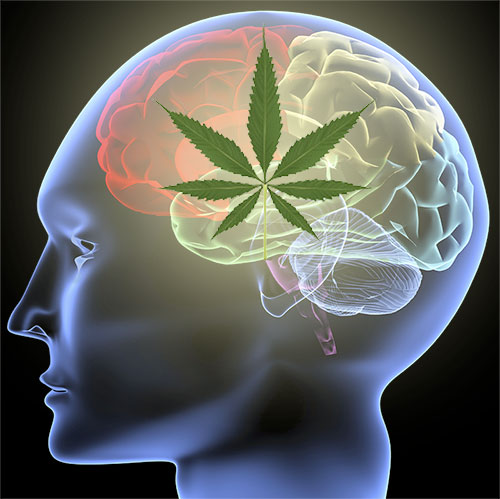New Cannabis Derivative, HU-308 Is Able To Treat Side Effects From Parkinson's Disease
Source : Thailand Cannabis News Jan 02, 2020 5 years, 3 months, 1 week, 6 days, 3 hours, 23 minutes ago
A new drug that provides the benefits derived from medicinal
cannabis without the "high" or other side effects may help to unlock a new treatment for
Parkinson's disease.
HU-308 is the new drug that lessens devastating involuntary movements called
dyskinesias, a side effect from years of treatment for
Parkinson's disease.

The new research, published in Neurobiology of Disease, has been conducted by the Centre for Neuroscience and Regenerative Medicine (CNRM) at the University of Technology Sydney (UTS) and the Applied Medical Research Institute of St Vincent's Hospital Sydney.
The research shows that in mice
HU-308 is as effective as
amantadine, the only available treatment for
dyskinesias. Furthermore, the combination of
HU-308 with
amantadine is more effective than either drug used alone.
Director of the CNRM and senior author of the study, Professor Dr Bryce Vissel said the findings present the possibility of new options for
Parkinson's patients.
Dr Vissel told
Thailand Medical News, "Our study suggests that a derivative of
HU-308, either alone or in combination with
amantadine, may be a more effective treatment for
dyskinesias and a much better option than using an unproven potentially harmful substance like
cannabis. Currently there is limited evidence about the effectiveness of medicinal
cannabis. One problem is that no
cannabis preparation is the same and cannabis has numerous effects, some of which may not be beneficial in
Parkinson's disease.”
Typically,
cannabis works on several receptors in the brain ie CB1 and CB2. The psychoactive effect is caused mostly because of receptor CB1.
Dr Vissel said the
HU-308 drug explored by his team works only on receptor CB2, allowing medicinal benefits to be administered without causing psychoactive effects like drowsiness or highness.
Dr Peggy Rentsch, lead author said it is unclear whether medicinal
cannabis itself can help
Parkinson's patients.
Dr Rentsch added, "Medicinal
cannabis contains different compounds, some of which make you high and which can impact a person's normal day-to-day activities. Our research suggests
HU-308 is an important prototype drug which we believe won't interfere with patients' day-to-day activities. They should maintain normal levels of mental sharpness on a treatment like this."
Dr Vissel and his team are investigating ways to block inflammation of the brain to maintain and restore memory and slow the progression for both
99s,-dementia,-alzheimer-and-prostate-cancer">Parkinson's disease and Alzheimer's disease.
Dr Vissel further added, "
HU-308 works by reducing inflammation in the brain, affecting the neurons and immune cells. In neurological disorders, the immune cells in the brain can lose supportive function with adverse stimuli,including but not limited to trauma or obesity and become 'activated'. We at the CNRM believe that, after this activation, the immune cells backfire, kill the brain's neurons, destroy them and become dysfunctional. By reducing inflammation in the brain such as with
HU-308, these immune cells can support normal neural function again, rather than inhibiting it."
Dr Sandy Stayte, study collaborator added, "The fact that
amantadine has its own set of side effects, may not work in the long term, and is still the only drug available on the market that is approved for dyskinesias makes our study really exciting. First, our study shows
HU-308 is equally affective so a drug like
HU-308 will be useful for those people who can't take
amantadine. Second, for those who can tolerate
amantadine, taking the combination may have even greater benefits than taking either drug alone. That means we may end up with a much more powerful treatment than currently available by ultimately prescribing both."
Reference: Peggy Rentsch, Sandy Stayte, Timothy Egan, Ian Clark, Bryce Vissel. Targeting the cannabinoid receptor CB2 in a mouse model of l-dopa induced dyskinesia. Neurobiology of Disease, 2019; 104646 DOI: 10.1016/j.nbd.2019.104646
